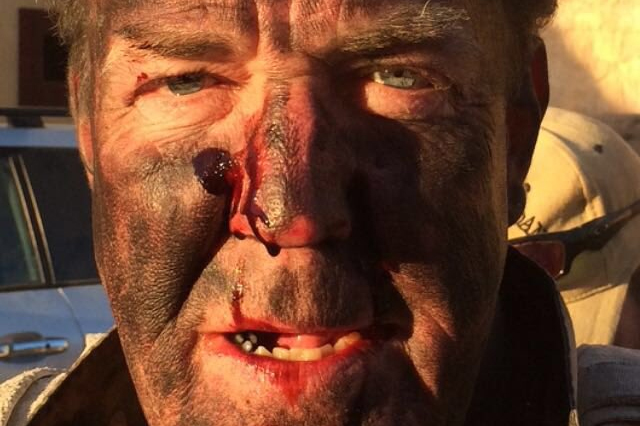
Teasing fans, he declined to offer any details of his apparently daring escapade, though a blackened face and bloody nose suggested he may have crashed a supercar down a coal mine.
Some of his Twitter followers speculated the sooty look was more the work of the make-up department than any outlandish antics, though to one doubter the presenter responded, “You’re going to feel silly when you see the show. It so isn’t make-up.”
I survived the day. Just. pic.twitter.com/I9IB9OGwv1
— Jeremy Clarkson (@JeremyClarkson) April 1, 2016
The day before posting the picture, Clarkson tweeted, “Tomorrow morning, I’m doing the most dangerous stunt I’ve ever attempted. This may well be a goodbye.”
The former Top Gear presenter has been getting into a few scrapes while filming for the new show, last month posting a photo of a mangled wreckage of a car after “a bit of an accident.”
Clarkson, along with long-time presenter buddies Richard Hammond and James May, started filming their new show last October, though a release date hasn’t yet been announced.
Amazon nabbed the trio after the BBC fired Clarkson from Top Gear last year following a bust-up with one of the show’s producers. CEO Jeff Bezos said the deal turned out to be “very, very, very expensive” for his company, with some reports putting it at $250 million for 36 episodes over three years.
Top Gear, meanwhile, is gearing up for a relaunch with a bunch of new presenters and refreshed format. Fronted by British TV and radio personality Chris Evans alongside Matt LeBlanc and five others, the BBC show starts airing on May 8. Commentators are keen to see which wins out among the competing shows, though the likelihood is that gearheads will simply lap up both offerings.


